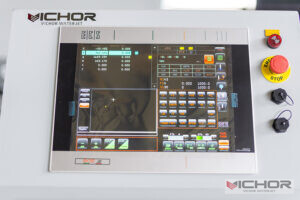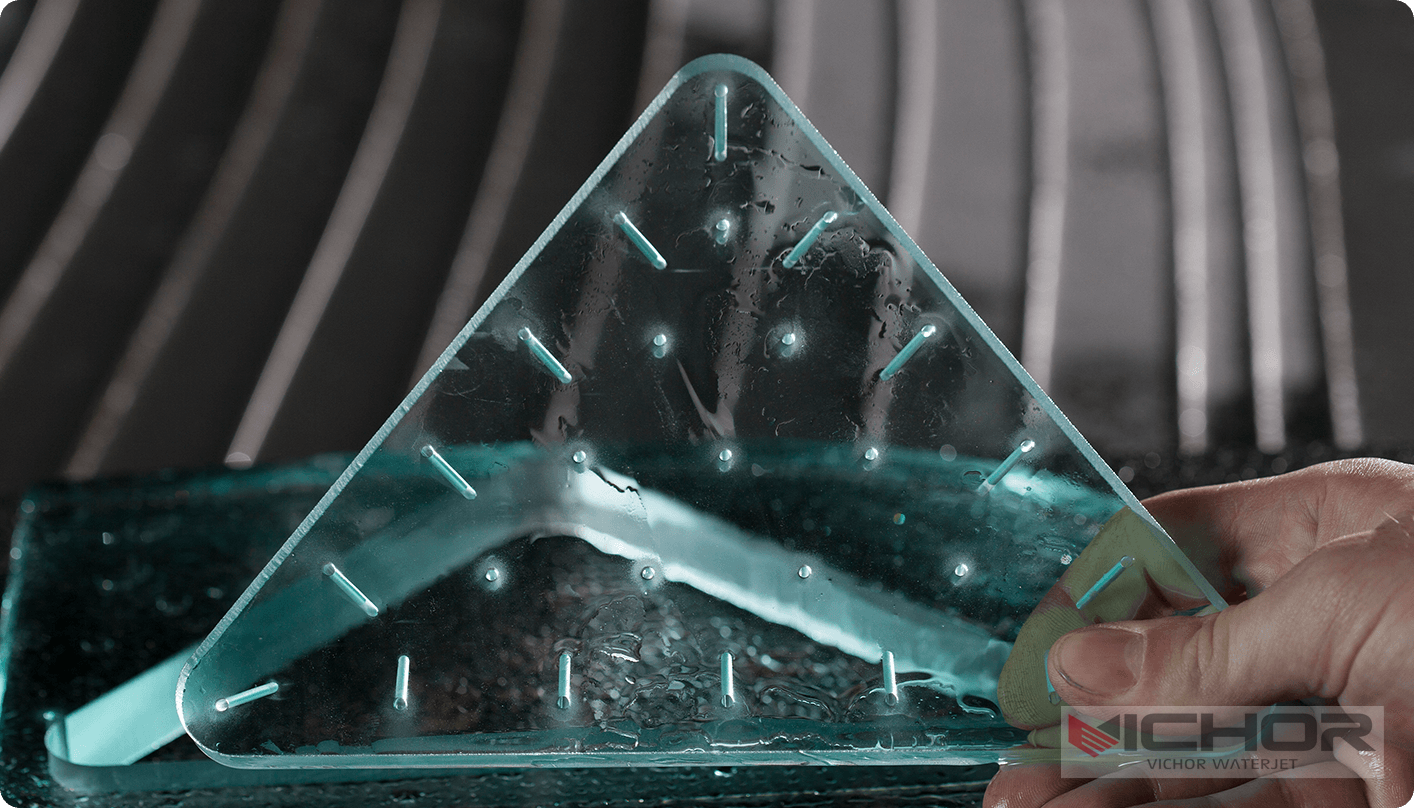
Water Jet Metal Cutting: 7 Reasons It Outperforms Laser and Plasma
I still remember the first time I watched a water jet metal cutting system slice through six inches of stainless steel. The shop manager pointed to the edge quality and said, “Try getting that with plasma.” Then he showed me a delicate aluminum honeycomb structure they’d cut earlier that day. “And good luck doing this with laser without melting everything.” That moment revealed the unique position water jet metal cutting occupies in modern manufacturing—it’s the versatile solution when other technologies reach their limits.
If you’re evaluating cutting methods for your metal fabrication needs, you’ve likely discovered that each technology has its sweet spot. But water jet metal cutting stands apart for its ability to handle materials and applications that challenge other systems. From thick armor plate to delicate aerospace components, this cold-cutting process delivers capabilities that thermal processes simply can’t match.
How Water Jet Metal Cutting Actually Works
The fundamental principle behind water jet metal cutting seems almost too simple to be effective: water forced through a tiny nozzle at extreme pressure (typically 60,000-90,000 PSI) creates a cutting stream moving faster than sound. For cutting metals, fine garnet abrasive is added to the stream, transforming the water into an efficient cutting tool that erodes material rather than melting it.
This erosion process is what makes water jet metal cutting so valuable for specialized applications. Unlike thermal processes that generate intense heat, the water jet process keeps materials at near-ambient temperatures. This prevents the heat-affected zones (HAZ) that can alter material properties and require secondary processing. The VICHOR series of water jet systems achieves this through precise pressure control and advanced abrasive delivery systems that maintain consistent cutting performance across different material types.
The Material Advantages of Water Jet Metal Cutting
Where water jet metal cutting truly distinguishes itself is in its material versatility. While laser cutting struggles with reflective materials like copper and aluminum, and plasma cutting lacks precision for thin materials, water jet handles everything from soft copper to hardened tool steel with equal capability. The process doesn’t care about material conductivity, reflectivity, or hardness—it cuts through virtually everything with consistent results.
I recently visited a specialty fabricator that uses their VICHOR system exclusively for materials other shops refuse to handle. “We cut titanium, incolnel, copper, brass, and aluminum on the same machine in the same day,” the owner explained. “We never worry about material properties—just thickness and cut quality.” This material agnosticism makes water jet metal cutting particularly valuable for job shops handling diverse projects.
Key Applications Where Water Jet Metal Cutting Excels
Certain applications practically demand water jet metal cutting technology. In aerospace manufacturing, the ability to cut heat-sensitive materials like titanium and composites without altering their structural integrity is paramount. The automotive industry relies on water jets for prototyping and custom fabrication where materials vary widely. Architectural metalworkers use the technology for creating intricate designs in stainless steel and bronze that would be cost-prohibitive with other methods.
One of the most valuable applications involves cutting prepared weld edges. Unlike thermal processes that can create hardened edges requiring grinding, water jet metal cutting produces ready-to-weld edges in a single operation. I’ve watched fabricators save hours of secondary processing by using their VICHOR systems to create perfect weld preparations on thick plate—work that would normally require separate beveling equipment or manual grinding.
Understanding Cut Quality in Water Jet Metal Cutting
The term “cut quality” in water jet metal cutting encompasses several factors: edge squareness, surface finish, and dimensional accuracy. Unlike thermal processes that typically produce tapered edges, a well-tuned water jet system can achieve near-perfectly square edges, particularly when using advanced control systems.
The surface finish in water jet metal cutting follows a predictable pattern—smoother at the top of the cut where the stream enters, with gradually increasing striations as the stream loses energy descending through the material. Advanced systems like VICHOR’s professional series incorporate automatic taper compensation and cutting parameter optimization to minimize these effects, delivering finishes that often eliminate the need for secondary processing.
Comparing Water Jet to Alternative Metal Cutting Methods
When evaluating water jet metal cutting against laser and plasma, each technology has distinct advantages. Laser cutting typically offers faster speeds on thin materials (under 1/2 inch) and lower operating costs for suitable applications. Plasma cutting provides high speed on conductive materials over 1/4 inch but with significantly reduced precision and substantial heat affect.
Water jet metal cutting occupies the middle ground—slower than thermal processes on many materials but offering unparalleled versatility and cold-cutting benefits. The economic crossover point where water jet becomes competitive depends on material type and thickness. For non-ferrous metals over 1/2 inch and all materials over 1 inch, water jet metal cutting often represents the optimal balance of speed, quality, and cost.
The Economics of Water Jet Metal Cutting
Understanding the true cost of water jet metal cutting requires looking beyond the initial equipment investment. While the purchase price of a quality system typically ranges from $80,000 to $200,000, the operational costs reveal the full picture. Abrasive garnet represents the single largest ongoing expense, typically costing $0.50-$0.80 per pound with consumption rates of 0.8-1.5 pounds per minute of cutting time.
The economic advantage of water jet metal cutting emerges in several areas: reduced secondary processing (no HAZ removal needed), higher material utilization through optimized nesting, and the ability to process multiple material types on a single system. Manufacturers like VICHOR have focused on reducing these operational costs through more efficient abrasive delivery systems and energy-saving pump technologies that maintain performance while reducing consumption.

Advanced Water Jet Metal Cutting Techniques
Modern water jet metal cutting has evolved beyond simple shape cutting. Five-axis cutting heads enable complex beveling and chamfering in a single setup. Dynamic water jet control allows operators to optimize cutting parameters in real-time based on material thickness and type. Piercing techniques have been refined to minimize damage when starting cuts inside material boundaries.
The most significant advancement in water jet metal cutting involves intelligent control systems that automatically adjust for the natural lag of the abrasive stream. Systems like VICHOR’s Advanced Control platform incorporate real-time adjustments that maintain dimensional accuracy throughout complex cutting paths, particularly important when cutting sharp corners and intricate geometries in metals.
Frequently Asked Questions About Water Jet Metal Cutting
Q1: How thick of metal can realistically be cut with water jet metal cutting?
A1: Practical thickness limits for water jet metal cutting depend on material type and system capability. Most production systems handle metals up to 6-8 inches thick, with specialized applications reaching 12 inches or more in softer materials. The VICHOR heavy-duty series, for example, routinely processes 8-inch thick stainless steel for nuclear and defense applications.
Q2: What tolerances can be expected with water jet metal cutting?
A2: Modern water jet metal cutting systems typically maintain ±0.003″ to ±0.005″ on dimensional accuracy, with positional accuracy of ±0.001″ or better. Edge angularity varies with thickness, but advanced systems can achieve near-perfect 90-degree edges even in materials several inches thick through automatic taper compensation.
Q3: How does water jet metal cutting affect material properties?
A3: Unlike thermal processes, water jet metal cutting introduces no heat-affected zone, meaning material properties remain completely unchanged right up to the cut edge. This is particularly valuable for heat-treated materials, stainless steels, and aluminum alloys where HAZ can cause cracking, warping, or corrosion susceptibility.
Q4: What is the typical cutting speed for water jet metal cutting?
A4: Cutting speed varies dramatically with material type and thickness. In 1-inch thick mild steel, typical speeds range from 1-3 inches per minute. In 1/4-inch aluminum, speeds of 10-15 inches per minute are achievable. The inverse relationship between thickness and speed is more pronounced in water jet cutting than with thermal processes.
Q5: Can water jet metal cutting create internal threads or tapped holes?
A5: While water jet metal cutting can produce holes for tapping, the process isn’t suitable for creating finished threads directly. The abrasive action produces a slightly irregular surface that requires subsequent tapping or threading operations. However, the holes are clean and accurately positioned, making them ideal for subsequent processing.
The decision to implement water jet metal cutting technology involves balancing its unique advantages against operational requirements and budget constraints. For manufacturers dealing with diverse materials, thick sections, or heat-sensitive applications, water jet provides capabilities that other technologies struggle to match. As the technology continues evolving with improved efficiency and smarter controls, its position as the versatile solution in metal fabrication seems assured.
continue reading
Related Posts
- 1350 words6.8 min read



